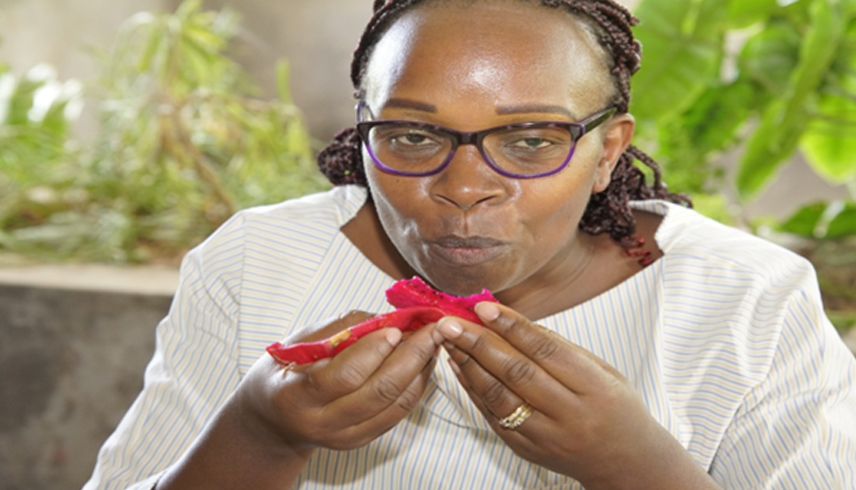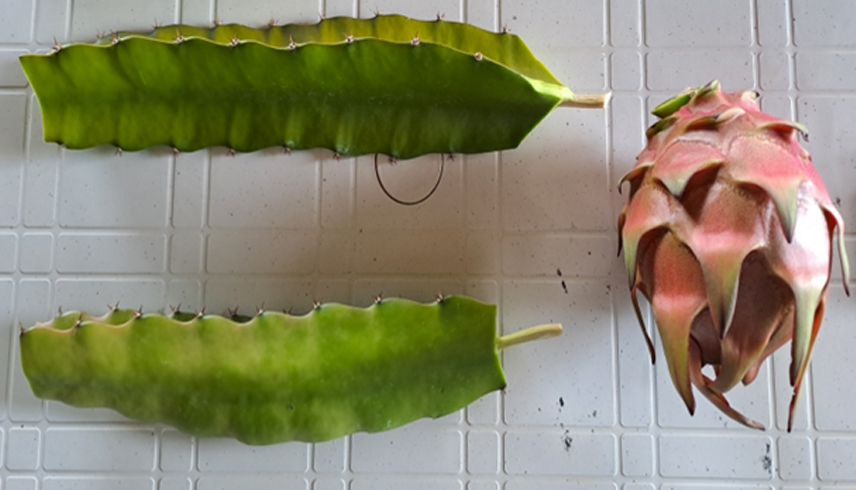D id you know that dragon fruits were a preserve for kings and queens? Now you know!
Last week I had the privilege of interacting with dragon fruits during a training of trainers’ activity in Mbeere North. Besides the theoretical lesson, I visited a dragon fruit farm for practical lessons. The climax of the activity was on savouring it! As you can see from the picture below, all my tastebuds were fully involved in this exercise. This being my first time to sample dragon fruit, I found red ruby variety very nice – how I wished I would get another slice!
But what is the best way to eat this sweet delicacy? You can use a spoon to eat the fruit out of the skin or peel the skin off and slice the pulp into small pieces after cutting it with a sharp knife. This fruit offers countless culinary possibilities. It makes a wonderful addition to a fruit salad. But dragon fruit is also perfect with homemade ice cream, on pastries, in shakes and smoothies, in breakfast cereal, in bowls or in salads as well as in cocktails. It makes an interesting and hearty dish when combined with tomatoes, onions and avocado (dragon fruit kachumbari). Dragon fruit comes in the category of functional foods due to its highly nutritious and nutraceutical properties. Nutritionally, it consists of vitamins such as vitamin C, vitamin A, and niacin, carbohydrates, proteins, fats, minerals such as potassium, sodium, calcium, phosphorus, zinc, magnesium, and iron, and fibre.
Furthermore, dragon fruit farming is environmentally friendly. These cactus-like plants are well-suited to the Kenyan climate, requiring minimal water and exhibiting excellent drought tolerance. By cultivating dragon fruit, farmers can contribute to sustainable agriculture practices and conserve water resources. It is also a good choice crop for agroforestry. By incorporating dragon fruit into agroforestry systems, farmers can diversify their income streams and contribute to sustainable land management for climate change mitigation and adaptation.

For dragon fruit farming, just like roses, for you to appreciate them, you’ve got to get used to the thorns (spikes)
It taken at least eighteen months from a dragon fruit cutting secured from a mother plant to a maturity and fruition. Well-supported plants can grow for over twenty years.
What a wonder! Dragon fruit flowers are known as “Queen of the Night” and “Moonflower” for their fleeting beauty. The flowers are nocturnal, only blooming at night, and their lifespan is around eight hours.

